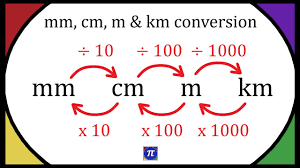Looking for an easy way to change millimeters (mm) into centimeters (cm)? You only need one exact rule: 1 cm = 10 mm. That means to convert mm → cm, you simply divide by 10. This guide explains the formula in simple words, shows step-by-step examples, a quick chart, common uses, and answers to FAQs. Use it with your on-page MM to CM Converter for instant, accurate results.
Quick answer (great for a featured snippet)
How do I convert millimeters to centimeters?
Use the exact rule: cm = mm ÷ 10.
Examples: 10 mm = 1 cm, 150 mm = 15 cm, 125 mm = 12.5 cm.
What are millimeters and centimeters?
- Millimeter (mm): a small metric unit used for fine measurements like screws, small parts, 3D prints, jewelry, and electronics.
- Centimeter (cm): a slightly larger metric unit used on product pages, size charts, stationery, fabric, and household items.
Both are part of the metric system, so converting between them is clean and exact—no approximations needed.
The exact formula (no guesswork)
By definition: 1 centimeter = 10 millimeters.
So:
cm = mm ÷ 10
mm = cm × 10
That’s it. Divide by 10 to go from mm to cm; multiply by 10 to go the other way.
Step-by-step: millimeters to centimeters
Example 1: 150 mm → cm
- Write the rule: cm = mm ÷ 10
- 150 ÷ 10 = 15
- Final: 150 mm = 15 cm
Example 2: 125 mm → cm
- cm = 125 ÷ 10
- = 12.5
- Final: 125 mm = 12.5 cm
Example 3: 9 mm → cm
- cm = 9 ÷ 10
- = 0.9
- Final: 9 mm = 0.9 cm
Tip: Because you only divide by 10, you can often convert by just moving the decimal one place to the left.
When to use mm vs cm (and why convert)
- Use mm for finer details: small hardware (M3/M4 screws), 3D printed parts, PCB spacing, watch/lens sizes.
- Use cm for quick reading and shopping: stationery, small home items, size charts, craft fabrics.
Converting mm → cm makes specs simpler to read, especially if a listing mixes both units or your tool/ruler shows centimeters.
Real-world examples you’ll use today
- Screw length: A screw labeled 40 mm is 4 cm (40 ÷ 10).
- 3D print piece: A part is 75 mm wide → 7.5 cm.
- Stationery: A notebook is 210 mm tall → 21 cm (A5 side).
- Craft fabric: A trim of 18 mm → 1.8 cm, easy to mark on a cm ruler.
- Phone/lens accessories: A ring of 32 mm → 3.2 cm.
Common MM → CM conversions (quick answers)
- 1 mm = 0.1 cm
- 5 mm = 0.5 cm
- 10 mm = 1 cm
- 12 mm = 1.2 cm
- 15 mm = 1.5 cm
- 20 mm = 2 cm
- 25 mm = 2.5 cm
- 30 mm = 3 cm
- 40 mm = 4 cm
- 50 mm = 5 cm
- 60 mm = 6 cm
- 75 mm = 7.5 cm
- 80 mm = 8 cm
- 90 mm = 9 cm
- 100 mm = 10 cm
- 120 mm = 12 cm
- 150 mm = 15 cm
- 200 mm = 20 cm

Mini chart: mm to cm (handy reference)
| mm | cm | mm | cm |
|---|---|---|---|
| 5 | 0.5 | 60 | 6 |
| 10 | 1.0 | 70 | 7 |
| 15 | 1.5 | 75 | 7.5 |
| 20 | 2.0 | 80 | 8 |
| 25 | 2.5 | 90 | 9 |
| 30 | 3.0 | 100 | 10 |
| 40 | 4.0 | 120 | 12 |
| 50 | 5.0 | 150 | 15 |
Need another value? Use cm = mm ÷ 10 or the converter on this page.
Best practices (so results are always clean)
- Keep it exact: mm ↔ cm is a factor of 10, so results are precise—no complex rounding needed.
- Write units clearly: always add mm or cm in your notes and messages to avoid confusion.
- Use consistent precision: for neat lists, choose a fixed number of decimals (e.g., 1 or 2) and keep it throughout.
- Check the context: product pages may round; if the fit matters, calculate yourself with ÷10.
FAQs
How many centimeters are in 1 millimeter?
0.1 cm. Since 1 cm = 10 mm, 1 mm = 0.1 cm.
What is the formula to convert mm to cm?
cm = mm ÷ 10. It’s exact—no approximation.
How do I convert cm back to mm?
Multiply by 10: mm = cm × 10. Example: 7.2 cm → 72 mm.
Is 30 mm the same as 3 cm?
Yes. 30 ÷ 10 = 3 cm (exact).
What about meters (m)?
To go from mm to meters, divide by 1000: m = mm ÷ 1000. Example: 250 mm → 0.25 m.
Why do some pages show slightly different cm values?
For mm ↔ cm, differences should be rare because it’s exact. If you see variation, it’s likely rounding style or a typo.
Can I do this in Excel or Google Sheets?
Yes. If A2 has mm:
- Centimeters:
=A2/10 - Meters (optional):
=A2/1000
Conclusion
For millimeters to centimeters, the conversion is as simple and exact as it gets: cm = mm ÷ 10. That’s why this conversion is perfect for quick specs, shopping, crafts, and 3D printing. Keep your units clear, use consistent decimal places, and rely on the on-page MM to CM Converter for instant results. With one rule and a clean workflow, you’ll never second-guess these measurements again.
